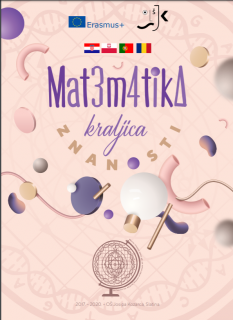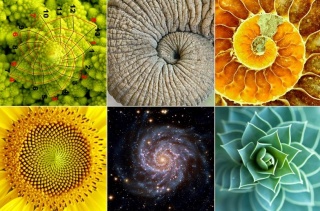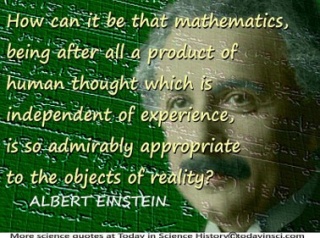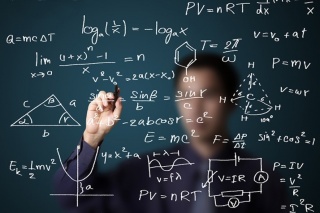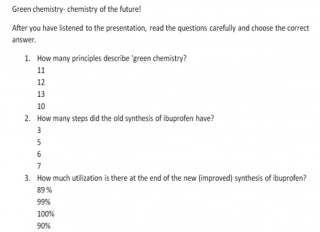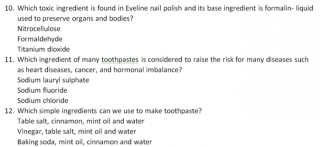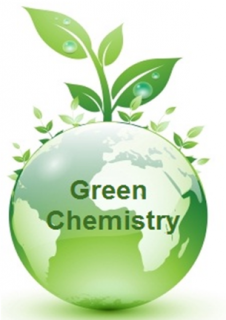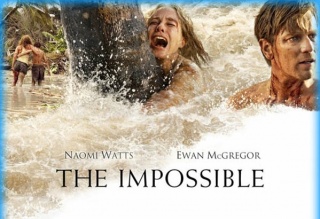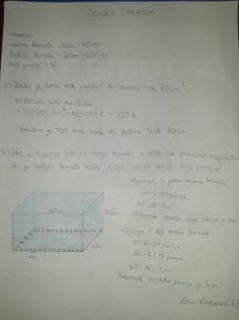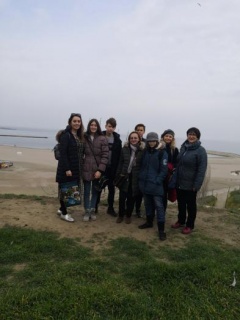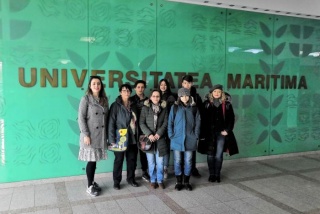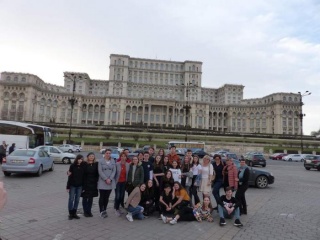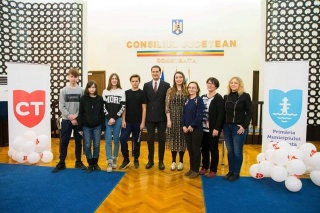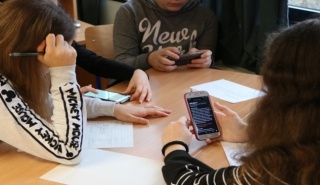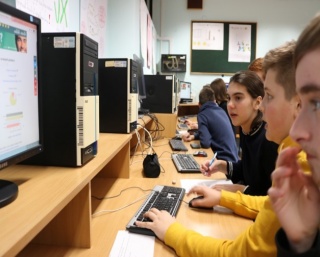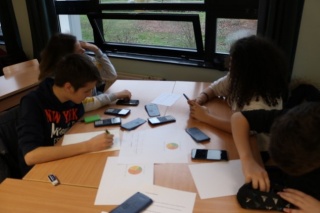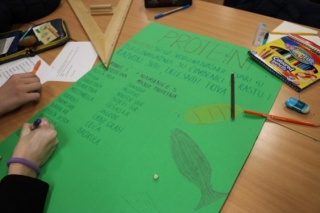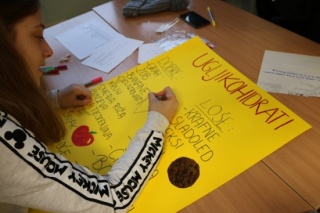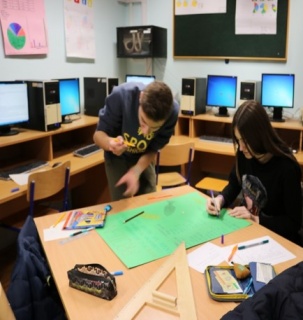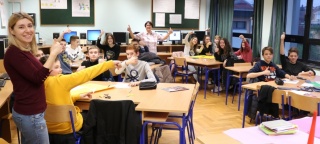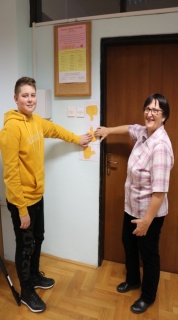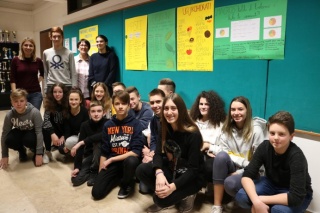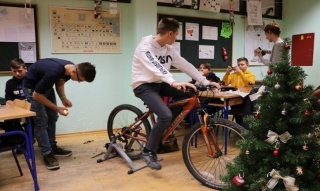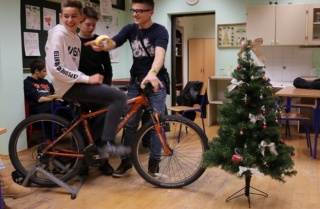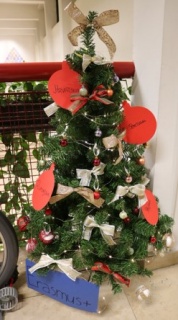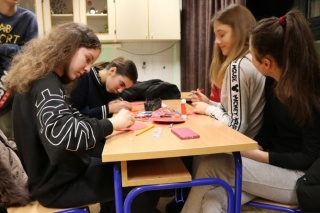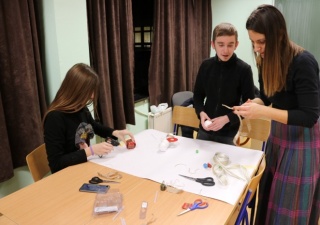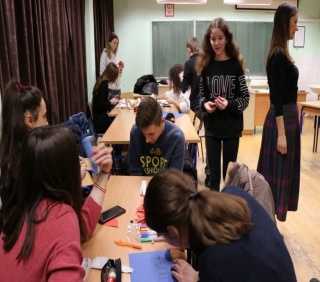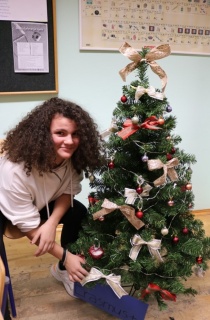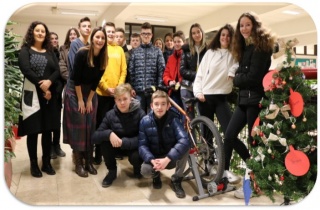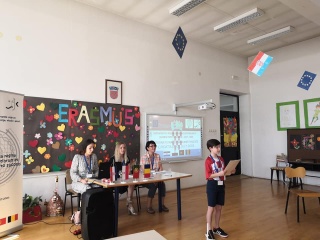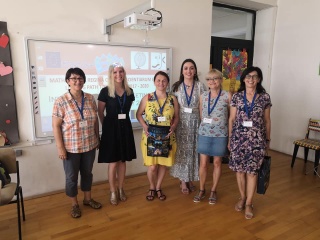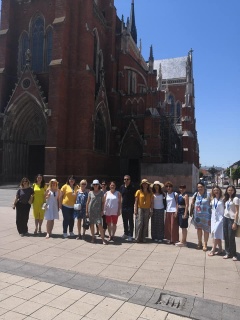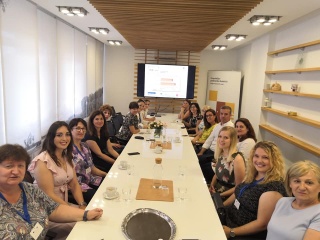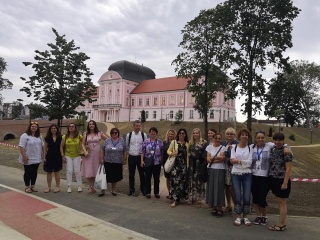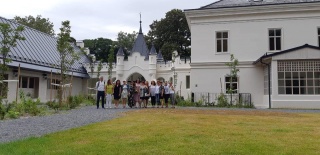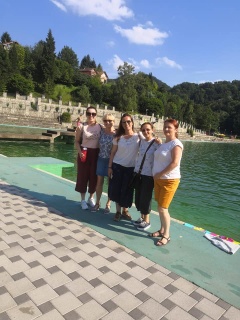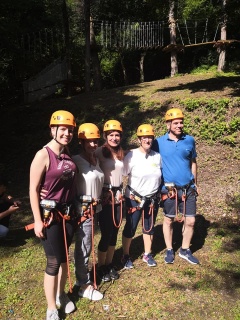| < | srpanj, 2020 | |||||
| P | U | S | Č | P | S | N |
| 1 | 2 | 3 | 4 | 5 | ||
| 6 | 7 | 8 | 9 | 10 | 11 | 12 |
| 13 | 14 | 15 | 16 | 17 | 18 | 19 |
| 20 | 21 | 22 | 23 | 24 | 25 | 26 |
| 27 | 28 | 29 | 30 | 31 | ||
Srpanj 2020 (1)
Lipanj 2020 (1)
Svibanj 2020 (1)
Travanj 2020 (1)
Ožujak 2020 (1)
Veljača 2020 (1)
Siječanj 2020 (1)
Prosinac 2019 (2)
Srpanj 2019 (1)
Lipanj 2019 (2)
Svibanj 2019 (1)
Travanj 2019 (1)
Veljača 2019 (1)
Prosinac 2018 (2)
Studeni 2018 (1)
Rujan 2018 (4)
Srpanj 2018 (1)
Ožujak 2018 (3)
Veljača 2018 (1)
Prosinac 2017 (3)
Studeni 2017 (2)
Links
Project forum
Website of the project
Općenito o projektu
Prvi meeting u Poljskoj
Agencija za mobilnost i programe EU
You Tube Channel of the project
Website of the project
Općenito o projektu
Prvi meeting u Poljskoj
Agencija za mobilnost i programe EU
You Tube Channel of the project
VIDEOS FROM THE MEETING IN CROATIA
10.07.2020., petak
END PRODUCT OF OUR WORK IN THE PROJECT
Project brochure
20.06.2020., subota
QUEEN SCIENCE MATHEMATICS - Activity for June 2020
First part of the activity in June
At the very end of the project, each of the 25 students participating in the project, all the teachers included, the headmistress and the school library were gifted a book filled with pictures and descriptions of each of the activities that were done during the three years duration of the project. Each finished activity intertwines with Mathematics, the queen science. Mathematics was our guide in preparing the activities and sometimes it was at the beginning, sometimes in the middle and sometimes in the end of each activity. All in all, we made a permanent document enriched with beautiful ideas of the teachers in our school and creative realization of our students which stays as a permanent value and enriched memory.
On- line version of the book: https://drive.google.com/file/d/1mU3AxrTj5H-oSzfVSQEsboGB8MhzhkPN/view?usp=sharing
Mathematics is called the queen of all sciences and a language with which all other sciences speak. Mathematics influences natural and technical sciences, describes the principles of physics, explains experimental results, and even predicts new phenomena, it is the basis for many things which we take for granted. But still, the deepest secrets mostly hide in things we believe are obvious.
Second part of the activity in June
Students were presented with a PowerPoint presentation during the online school on the Yammer platform and they were able to comment on it among themselves or with their teachers during the month of June.
Great secret and at the same time a greatly known fact described in the presentation are numbers. Numbers can be seen in everything that surrounds us – in nature, in space, human beings and its works. Each shape and process are defined and described with numbers. Proportions and progressions manifested in nature through beautiful shapes and processes do not exist accidentally. They are in accordance with mathematical laws of beauty and harmony.
Albert Einstein
All significant ancient works of mankind like The Great Pyramid in Giza, Stonehenge, many temples, and many works of art in the area of computer graphics, music, architecture and literature contain the secret of numbers. There are different views about numbers. Contemporary science wonders whether mathematics isan invention, a product of the human mind or is it a revelation, something that exists regardless of us? Albert Einstein also thought: 'How can it be that mathematics, being after all a product of human thought which is independent of experience, is also admirably appropriate to the objects of reality?'
Tradition
Tradition tells us through myths that gods gave numbers to the humankind. Egyptian mythology, for example, says that numbers were invented by Thoth (Hermes), god of science, art, and wisdom. In Greece, Hermes was the one that invented measures, numbers and the alphabet and instructed humankind into those knowledges. In ancient Rome that god was Mercury.
Today
Today, the most widespread is applied mathematics. Same thing happens with numbers – only its' quantitative value is taken into account. In one modern, widely spread interpretation, number is an abstraction which is used for quantitative characterization of objects. However, mathematicians and philosophers of the ancient world saw numbers in a completely different way. Understanding the number as something much wider, the ability of numerical evaluation was only one of its many functions. Its feature of numbering things shows only its external aspect. But there is another, internal, functional aspect or better yet, its ability to synthesize and connect and that aspect is considered as an idea, a law, a mode. Mathematics itself as a science about numbers was considered as something much more than ordinary measurement of things and manipulating quantities.
Evaluation at the end
Presentation for students can be found on the link:
https://drive.google.com/file/d/1tEN-9Y1eaOqPGGago-Lnf4l4uAammv_J/view?usp=sharing
Since we revised everything that we didin the project with this activity, students had the ability to remind themselves of all the activities and it was easy to evaluate it.
The aim of the evaluation is the evaluation of the project. Evaluation was done with students, teachers and our headmistress through the Forms application in which there was survey with the ability for voting about each of the activities done in the project (scale in the form of stars from 1 to 5).
Microsoft Forms: https://forms.office.com/Pages/ResponsePage.aspx?id=FvJamzTGgEurAgyaPQKQkdP_P7l5iGBPhp6OD9hyiRZUMzZXN1IwOEM5VU81RFc4RUxWTkRSRzRRUC4u
Activity was, in its entirety, completed during online school and was designed by Math teacher Anita Jukić.
26.05.2020., utorak
ONLY ONE EARTH - Activity for May 2020
Only one EARTH – 'Green chemistry'
Description of the activity
Students listened to a lecture about 'Green chemistry'. They learned about the principles of that project. They listened about the analysis of various cosmetic products or how to recognize harmful substances that can be found in them.
After that, the students checked their knowledge through a quiz with questions related to the topic.
In the questions students were supposed to recognize basic toxins which are most commonly found in cosmetics and know their harmful effects.
Here you can see the presentation and task/quiz for students in Croatian - Made by our students and the Chemistry teacher
a) Audio Power Point presentation (in Croatian)
https://drive.google.com/file/d/1ecGxyfZ-rOdnVCOhNKzLvgW7m4sW0rVg/view?usp=sharing
b) On-line task _ quiz
https://forms.office.com/Pages/ResponsePage.aspx?id=FvJamzTGgEurAgyaPQKQkZEH1YM9kTlJi-4wKFcISjRUNUlRS1lWS0hONzFIQkZIOTU1WUhJQlE1OS4u
Here you can read the questions in English…
... in which you can find a correlation with mathematics
Aim of the activity:
Raise awareness of the students about the harmfulness of certain toxins and teach them about healthier alternatives.
Motivation for the activity comes out of the fact that nowadays more and more cosmetics are made harmful and dangeroues chemicals. With a little education you can find a much better option so that you do not gather toxins in your blood with years of using a certain products.
Modern methods of work: Encourage students to think about healthier options when it comes to cosmetics used on a daily basis and to check what they have learned by using the Office tool 'Forms'.
Teaching aims: After the workshop students are able to differentiate good from bad ingredients in cosmetics and have the ability to read the declarations which contain the substances found in the products. In that way, the students will become more aware and be able to act 'greener'.
Results of the activities:
A Powerpoint presentation on the topic of 'Green chemistry' as well as a knowledge quiz which students used to check how much they have learned.
Activity evaluation: Students graded the activity with stars (1-5).
Additionally:
The activity is created and accomplished by Chemistry teacher Silvija Bašić and Math teacher Anita Jukić in cooperation with English teacher Dražena Vujanović.
05.04.2020., nedjelja
Activity for March and April 2019./2020. Humans and nature (activity was done entirely online)
Description of the activities:
• watching of a catastrophe movie The Impossible (2012.)
• expression of emotions about the movie with exit cards
• solving a movie quiz
• watching a presentation about the movie and the true event (tsunami of 2014.) on which the movie is based
• creative expression of students – blackout poetry based on the Letter of an Indian chief of Seattle
Aims of the activities:
• develop the awareness of students regarding the harmful relationship of man towards nature (pollution, overexploitation of resources, destruction of the environment etc.) and consequences of that negative influence (natural catastrophes, volcanic eruptions, fires, floods…)
• encourage students for critical thinking and consideration of the environmental problems
• awaken the feeling of awe towards nature instead of the attitude that nature should serve humans
• encourage students' creative expression about Earth and environment protection
• Develop students' digital competences
Motivation for the activity comes out of the fact that the problems of environment protection and sustainable development are always current and significant, especially now in the time of the pandemic of the coronavirus which has a bad influence on humanity while, at the same time, nature is recovering from the harmful treatment of people against their environment.
Modern methods of work:
• creative writing method – creative expression of students with the blackout poetry technique
• e- learning (networked learning) – project activities done in online environment by using various digital tools (Bookwidgets, Genially, YouTube) in a virtual classroom on Yammer
Teaching aims:
Student will be able to:
• express their emotions regarding the seen movie
• creatively express themselves encouraged by a movie
• recognize the negative role of humans in the environment pollution
• Become aware of the importance of environment protection and sustainable development
Results of the activities:
Students will become aware of the negative effect of humans towards nature and they will develop their awareness of the importance of environment protection and the necessity of sustainable development. Their thoughts about the mentioned problems will be expressed through creative work technique of blackout poetry based on the Letter of the Indian chief of Seattle about the relationship of humans and nature.
Presentation about the activity made in Genially
09.03.2020., ponedjeljak
Second mobility in Romania
20.02.2020., četvrtak
Activity: I live ... EVERYWHERE February 2020.
Students of the 8th grade had a workshop called ‘Man is the master of everything?’. Aim of the workshop is that students, divided into groups, collect (Statistical system of Croatia), examine and graphically display statistical data about demographic and social changes in their own region, country, Europe and around the world.
First group showed statistical data about external migration of inhabitants of Croatia (dzs.hr) 2009.- 2018.
Second group showed statistical data of migrations from Croatia to other countries.
Third group researched immigrants and emigrants in Virovitičko – podravska county 2014.-2018.
Based on the collected data all three groups of students made, lead by contemporary learning methods, bar and pivot diagram of migrations in the Microsoft Excel program. Learning outcomes were realized through collection and analysis of data and exhibition of the work on the project board in school which is the end-result of the activity.
Motivation for the activity comes out of the fact that people migrate out of economic, social and demographic changes. By researching behavior of primates, their social relations where one of them represents the leader, we concluded that we behave very similar to primates. How a society of primates behaves – migrates from the area that is bad to a one that is better for life. In the civilized age of the human world this looks a little bit different even though the principles are the same. Lead by that topic, students watched a movie called ‘Jane’s journey’ – Life path of Jane Goodall’, about an English woman who researched about chimpanzees in Africa (Jane – ‘If we are the most intelligent species that ever lived on our planet, how come we are destroying it?’).
Additionally:
The activity is created and accomplished by Math teachers Denis Vujanović and Anita Jukić in cooperation with English teacher Dražena Vujanović.
The activity is accompanied by making a short film in English which will be released on a transnational meeting in Romania and Poland 2020. In purpose of making this kind of a film, the activity is translated in English and leading actors are students who present their knowledge through the activity. For documenting the activity, we are going to use multimedia equipment, photo camera, camera, internet, You Tube channel and Adobe Premiere Pro program.
29.01.2020., srijeda
Activity: WHERE WE ARE COMING January 2020.
Aim of the activity is for students to realize some answers related to the human origin, biodiversity and factors which influence heredity.
When a baby is born to a family it usually starts up a conversation like whose nose does it have, whose eyes, fingers, mouth and it goes on. Thereby nobody remarks the cause of appearance of certain characteristics, but only the characteristic itself. Today we know the basic characteristics on which heredity of certain characteristics resides. What we look like is mostly determined in the moment of insemination. Also, some disorders and illnesses are determined at that moment. Still, some characteristics which appear later in life are influenced by our own decisions and style of life. Answer to the question what those characteristics are can be given by genetics and geneticists. The motivation for our activity comes out of this, and one of the tasks for the students is to examine important discoveries in genetics throughout history. History is filled with different theories about all the factors that influence our physical appearance or our behavior. Today, we know that the instructions on building our bodies are written inside our genes. The object of interest and examination of geneticists are structure, functions and actions of genes. Considering that genes are a small part of the DNA molecule which are found in the cores of cells, their effect was a mystery for a long time. Only by development of contemporary methods we were allowed a view into that microworld.
Students were divided into four groups in order to realize the learning outcomes by examination of the previously mentioned:
- first group of students made a poster with the topic ‘Important discoveries in genetics’
- second group of students made a table of dominant and recessive properties in humans on poster paper
- third group of students had a task called ‘Inherited or acquired’, they worked in pairs and they described each other by using as many characteristics as possible and those that they listed were sorted into the ‘inherited/acquired table and they discussed which person in the pair could influence creation of acquired properties; then they solved a task in which they had to determine were the given properties inherited or acquired, finally they had to choose five inherited properties of the people from the table to show some of the dominant and recessive properties in humans and investigate (by watching or speaking) the manifestation with the participants (25 students)
- fourth group showed the collected data with multiple bar graph contemporary methods by using Microsoft Excel and then solve mathematical tasks and combinatorics – a group of tasks called ‘What is my ear like, or which gene dominated?’ [Example of one of the tasks: ‘Mother and father are righthanded and their son is lefthanded. What kind of genotype can the parents have if the mark of the gene for a dominant right hand is D, and the left id d?’]
Instructions which determine the appearance, and structure of a cell, organs in the body are inherited in form of genes from the parents. For every characteristic, at least one gene was inherited from the mother and one from the father. Results of the activities of all the groups were exhibited on the project board in school.
Additionally:
The activity is created and accomplished by Math teachers Denis Vujanović and Anita Jukić in cooperation with English teacher Dražena Vujanović.
The activity is accompanied by making a short film in English which will be released on a transnational meeting in Romania and Poland 2020. In purpose of making this kind of a film, the activity is translated in English and leading actors are students who present their knowledge through the activity. For documenting the activity, we are going to use multimedia equipment, photo camera, camera, internet, You Tube channel and Adobe Premiere Pro program.
16.12.2019., ponedjeljak
Primum non nocere… (Hippocrates – “First, do no harm”) Activity for November/December 2019.
In the plan and program of the project it is advised that students analyze the chemical compounds which are
beneficial, and which are harmful to the human health.
Description of the activity:
At the beginning of the workshop students present all the food they have consumed the day before through a
digital tool Mentimeter. Participants of the activity are then divided into four groups. Three of the groups,
according to the given list of food, with the help of a computer connected to the Internet, analyze which of
them are beneficial and which of them are harmful for the health of a human being. The fourth group
calculates the body mass index for every student and the amount of proteins, carbs and fats necessary for
maintaining body weight, losing weight and muscle growth. After that they make a poster and present their
conclusions.
Aim of the activity: raise awareness of the participants of the activity about a healthy diet
Motivation for the activity comes out of the fact that many of the information we get in the media
nowadays give out a wrong or corrupted idea about a health and a balanced diet. Children often find
incorrect information about a balanced diet through various recommendations of dietetic food and
beverages.
Modern methods: Encourage students’ reflection about the healthy and balanced diet by collecting data
with the help of the digital tool Mentimeter
Learning outcomes: After the workshop, each student will be able to distinguish good from the bad food,
make a comparison of different types of food and describe an example of a healthy diet.
Results of the workshop: Posters which present the students’ findings and conclusions
Evaluation of the activity: Students expressed their feelings of the workshop by raising their thumbs in the
air.
Additionally:
The activity is created and accomplished by Chemistry teacher Ksenija Lisjak in cooperation with Math
teacher Denis Vujanović and English teacher Dražena Vujanović.
The activity is accompanied by making a short film in English which will be released on a transnational
meeting in Romania and Poland 2020. In purpose of making this kind of a film, the activity is translated in
English and leading actors are students who present their knowledge through the activity. For documenting
the activity we are going to use multimedia equipment, photo camera, camera, internet, You Tube channel
and Adobe Premiere Pro program.
09.12.2019., ponedjeljak
How is it working? Activity for September/October 2019.
Name of the activity: Bicycle-powered Christmas tree
In the plan and program of the project it is advised that students learn how man can overcome the laws of
physics.
Description of the activity: In the first part of the workshop, we connected a dynamo to the bicycle and
then the Christmas lights. Students had to calculate the voltage that the dynamo would make upfront so that
they would know which Christmas lights to choose from. Maximum voltage we got was 12V.
Second part of the workshop was reserved for making of Christmas tree ornaments. Our Christmas tree was
decorated not only with Christmas lights but also with inventive handmade ornaments and those that stood
out especially are the ones with the names of our partner countries and the Erasmus + sign.
Aim of the activity: starting up the dynamo with the cyclic power of the legs which would then produce
enough power to make the Christmas lights light up on the Christmas tree.
Motivation for the activity comes out of the fact that even though Christmas lights are beautiful, they cause
massive and wasteful use of electric energy. We wanted to make beautiful Christmas lights light up by being
ecologically responsible at the same time.
Modern methods: students’ handcrafts
Aims of learning: students will be able to apply their knowledge as to what it takes to connect the lights and
make them light up stronger and more efficient.
Result of the activity: the Christmas tree would light up when the pedals of the bicycle move
Evaluation of the activity: method of conversation
Additionally:
The activity is created and accomplished by Physics teachers Martina Bukvić and Tijana Cvjetković in
cooperation with Math teacher Anita Jukić and English teacher Dražena Vujanović.
The activity is accompanied by making a short film in English which will be released on a
transnational meeting in Romania and Poland 2020. In purpose of making this kind of a film, the
activity is translated in English and leading actors are students who present their knowledge through the
activity. For documenting the activity we are going to use multimedia equipment, photo
camera, camera, internet, You Tube channel and Adobe Premiere Pro program.
09.07.2019., utorak
INTERNATIONAL MEETING IN SLATINA
From 1 to 5 July, Croatia was the host for the international meeting in Osnovna škola Josipa Kozarca in Slatina. On the first day our guests were greeted by our teachers and our students. After the welcoming show and a short tour around the school, our guests were taken on a short excursion to a nearby city of Đurđevac where they were able to visit the Croatian Sahara. On the second day, our path has taken us to Osijek to the Faculty of Mathematics where we were warmly welcomed by the professors and we were able to listen to a lecture in English related to our project. Then we went on a tour around the city (cathedral, the main square, Tvrđa, museum of Slavonia and many more). On the third day our guests were taken on an unique experience to Adrenaline park Duboka, Orahovica lake and the old Ružica grad. On the fourth day we visited the heart of our county Virovitičko- podravska where we visited the town of Suhopolje and Virovitica. On the last day, before deporting for the airport, we went to visit the old castle of Trakošćan. Below you can see some of the photos from this unforgetable meeting.

